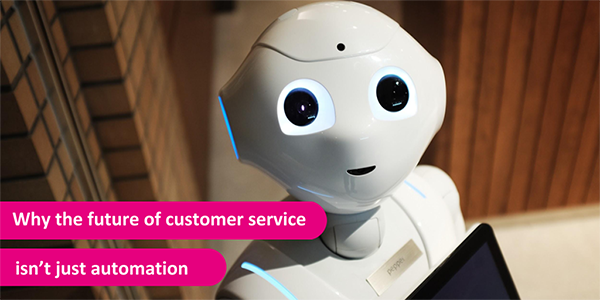Why the future of customer service isn’t just automation

The rise of artificial intelligence is leading many experts to predict that the future of customer service will be driven by automation and technology, without the need for human agents to interact with consumers. However, a new article from Ryan Buell, Associate Professor at Harvard Business School points out that this vision is unlikely to come true due to fundamental consumer traits and a need for a balance between technology and the human touch.
In fact, he stresses that one of the main arguments around automating customer service - that it automatically reduces costs while improving the experience - isn’t always true:
- When a bank introduced online channels, transaction volumes rose, and customers began to call and visit bank branches more, pushing up costs.
- Patients who signed up to receive online consultations in the US then actually doubled the number of physical trips made to the doctors.
- When bank customers used an ATM rather than interacting with a person, their overall level of satisfaction with the bank fell.
All of these points mean that brands need to think automating customer service processes. How will it help the customer? How can we drive successful adoption by making their lives easier?
Professor Buell highlights three factors that mean that certain parts of customer service should never be automated:
- Many customer service interactions are emotionally-based, in these cases most of us want, or even need, the reassurance and empathy that a human provides.
- While we are happy to find information digitally, we don’t yet trust machines with more complex problems – we want to talk to a human to explain our issue in detail.
- Automation often means that customers themselves having to do more. While this is fine for routine tasks (such as finding information through self-service systems for example), pushing more complex tasks onto consumers makes them question exactly what value your brand is providing to them.
Clearly, this doesn’t mean that automation and technology have no place in customer service. As noted CX expert Régine Vanheems points out, the best approach is to draw a line with technology at one end and human agents at the other and map different activities along this. Some interactions (such as buying more ink for your printer) are simple and require speed and information. These can be dealt with best through automation and artificial intelligence. Others are more emotional, and advice based (such as buying a car), requiring human skills such as empathy, reassurance and empathy. Brands need to cater for both types of conversation and have to understand that consumers want the ability to move between technology and humans during the same journey. For example, they may begin by gathering information and asking basic questions (in the case of car buying around price and basic specifications), but then want to talk to a human to find answers to more complex queries. They don’t then want to have to repeat themselves – it has to be a joined-up, seamless experience.
It is easy to see automation and artificial intelligence as spelling the end for the human element of customer service, but as this research shows, the reality is the complete opposite. There is a need for both. Those companies that succeed in mastering the balance between automation and the human touch, using AI to empower agents so that they can have more complex conversations, will be the CX winners in the future, reaping the rewards of greater loyalty and ongoing revenues.
To help brands better understand the need for both human agents and technology, Régine Vanheems has written a detailed white paper on the subject. Click here to download your copy of Putting the human at the heart of digital CX.






